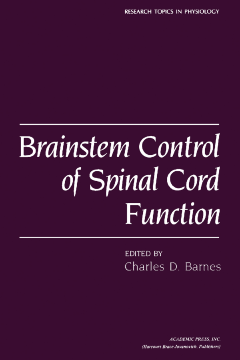
Additional Information
Book Details
Abstract
Brainstem Control of Spinal Cord Function summarizes the research findings on major bulbospinal control systems. It explores how sensory, reflex-evoking inputs to the central nervous system (CNS) modulate descending control signals and how descending control signals regulate the excitability or gains of the segmental reflex arcs. It also looks at the role of the reticulospinal system in the control of movement, the effects of labyrinth and neck inputs on vestibulospinal and medullary reticulospinal neurons, the behavioral significance of the raphe-spinal system, locus coeruleus control of spinal cord activity, and the influence of allergic encephalomyelitis on monoaminergic neurotransmission.
Organized into six chapters, this book begins with an overview of the findings on how human spinal reflexes are modulated. It then discusses the reticulospinal system, its role in the control of movements, and its involvement in responses elicited from several sensory systems. In addition, the book examines the response characteristics of the vestibulospinal and the medullary reticulospinal systems based on experiments on labyrinthine and neck input. Other chapters focus on all aspects, including motor and sensory, of the raphe-spinal system, physiological aspects of coerulospinal neurons, and the mechanisms by which allergic encephalomyelitis results in hindlimb paralysis.
This book is a valuable resource for physiologists and students of physiology.
